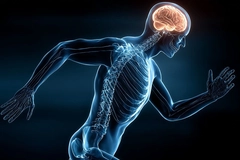
- Industry news
Industry news
Trending now
- Category news
- Reports
Trending now
- Key trends
Trending now
- Multimedia
Multimedia
Trending now
- Journal
- Events
Trending now
- Suppliers
Suppliers
Trending now
- Home
- Industry news
Industry news
Trending now
- Category news
- Reports
Trending now
- Key trends
Trending now
- Multimedia
Multimedia
Trending now
- Events
Trending now
- Suppliers
Suppliers
Trending now
First-trimester weight gain tied to obesity risk and fatty muscles linked to heart disease

A new US National Institutes of Health (NIH) study reveals that preventing adult obesity starts during a mother’s pregnancy. It finds that pregnant people who gain excess weight during the first-trimester are linked to larger fetal abdominal and arm fat. A separate study finds fatty muscles raise the risk of serious heart diseases.
A study in the American Journal of Clinical Nutrition suggests that adult obesity can be prevented during fetal development. Timing of weight gain, instead of total weight gain, is key for preventing excess fetal size and reducing the risk of heart disease, high blood pressure and diabetes.
Researchers came to this conclusion after examining the relationship between gestational weight gain using 3D fetal body composition and organ volume measurements.
They tapped data from an earlier study of over 2,600 singleton diverse pregnancies in the US, which recorded maternal weight before and during pregnancy, including 3D ultrasound scans during the pregnancy.
Timing of weight gain
The researchers defined excessive weight gain in pregnant people as gaining more than 2 kilograms (about 4.4 pounds) in the first-trimester.
The researchers noticed that fetuses from the excessive weight gain group retained larger arm thickness and abdominal measurements until the end of pregnancy. This remained the case even when mothers’ weight gain was not excessive during other trimesters.
Since the study looked at the impact of weight gain during the first-trimester, the authors note that the timing of weight gain is key to preventing excess fetal size.
 Pregnant people who gain excess weight during the first-trimester are linked to larger fetal abdominal and arm fat.The researchers suggest that future studies look at whether fetal changes have functional implications for childhood adiposity and metabolic dysfunction.
Pregnant people who gain excess weight during the first-trimester are linked to larger fetal abdominal and arm fat.The researchers suggest that future studies look at whether fetal changes have functional implications for childhood adiposity and metabolic dysfunction.
Obesity in women
Another new study in the European Heart Journal says that people with fat inside their muscles have a higher risk of heart disease, regardless of body weight. Not much is known about this type of intermuscular fat, and the study claims to be the first to investigate it.
The European Society of Cardiology says the finding adds to growing evidence that body mass index (BMI) or waist circumference is insufficient to measure the risk of heart disease for all people accurately.
“Obesity is now one of the biggest global threats to cardiovascular health, yet BMI — our main metric for defining obesity and thresholds for intervention — remains a controversial and flawed marker of cardiovascular prognosis. This is especially true in women, where high BMI may reflect more ‘benign’ types of fat,” says lead author and professor Viviany Taqueti, director of the Cardiac Stress Laboratory at Brigham and Women’s Hospital and Faculty at Harvard Medical School, Boston, US.
“Intermuscular fat can be found in most muscles in the body, but the amount of fat can vary widely between different people. In our research, we analyze muscle and different types of fat to understand how body composition can influence the small blood vessels or ‘microcirculation’ of the heart, as well as future risk of heart failure, heart attack and death.”
Fatty muscle risk
Researchers studied 699 people over sixty years old, with an average age of 69, who suffered from chest pain and shortness of breath. They calculated the ratio between intermuscular fat and total muscle plus fat.
 Those with higher fat stored in muscles were more likely to have damaged tiny blood vessels connected to the heart.Those with higher fat stored in muscles were more likely to have damaged tiny blood vessels connected to the heart. They were also more likely to die or be hospitalized for heart disease. Fat stored under the skin (subcutaneous fat) did not seem to increase the risk.
Those with higher fat stored in muscles were more likely to have damaged tiny blood vessels connected to the heart.Those with higher fat stored in muscles were more likely to have damaged tiny blood vessels connected to the heart. They were also more likely to die or be hospitalized for heart disease. Fat stored under the skin (subcutaneous fat) did not seem to increase the risk.
“For every 1% increase in fatty muscle fraction, there was a 2% increase in the risk of CMD and a 7% increased risk of future serious heart disease, regardless of other known risk factors and BMI,” details the European Society of Cardiology.
Taqueti says that knowing about intermuscular fat risk linked to heart disease opens up ways to identify people who are at high risk, regardless of their BMI. “These findings could be particularly important for understanding the heart health effects of fat and muscle-modifying incretin-based therapies, including the new class of GLP-1 receptor agonists.”
“What we don’t know yet is how we can lower the risk for people with fatty muscles. For example, we don’t know how treatments such as new weight-loss therapies affect fat in the muscles relative to fat elsewhere in the body, lean tissue and ultimately the heart.”
A recent study links diets high in ultra-processed foods with higher amounts of fat stored inside thigh muscles, regardless of the amount of calories consumed or level of physical activity. It suggests that more intramuscular thigh fat can also increase the risk for knee osteoarthritis.










